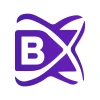Introduction
1.1. Evolution of frontend web development
Web frontend development has experienced a considerable evolution in the last decade, going from being a set of simple static pages to becoming rich and dynamic web applications. The growing demand for more interactive and faster user experiences has led to the emergence of numerous frameworks and libraries JavaScript that facilitate the creation of these applications.
In recent years, JavaScript frameworks and libraries / libraries have become a component key in frontend development and, over time, different options have emerged depending on the needs of the project and the preferences of the developer.
In this article, we will analyze the trends in frontend web development for 2024, paying special attention to the main JavaScript frameworks and libraries, such as React, Vue and Angular, which currently dominate the market and offer the best job opportunities.
1.2. Importance of trends in web development
Keeping up with trends in web development in web app development company is crucial for both experienced and beginner developers. As technologies evolve and user needs change, adapting to new approaches and tools is essential not to be left behind in such a competitive labor market.
Furthermore, current trends in web development are often linked to improving user experience, performance optimization and accessibility. Being aware of trends and adopting them in our projects will allow us to provide more effective and satisfactory solutions for end users.
2. React.js
2.1. Introduction to React
React is a JavaScript library created by Facebook (Meta) and released in 2013. Its main objective is to facilitate the construction of scalable and high-performance user interfaces (IUs). React introduced the concept of components, which are reusable and self-contained code blocks that represent a specific part of the UI. Thanks to its modular approach and its "state" and "property" system, React allows develop complex web applications efficiently and easily maintained.
2.2. Advantages and disadvantages of React
Advantage:
Great performance thanks to the use of a Virtual DOM that minimizes updates in the real DOM.Wide community and ecosystem, which facilitates access to learning resources, troubleshooting and third-party packages.Compatibility with mobile applications through React Native, allowing some of the code to be reused between web and mobile platforms.Disadvantages:
Initial learning curve, especially for those who are not familiar with concepts such as the state and life cycle of the components.Not a complete framework, which implies that developers must select and integrate other libraries to manage certain functionalities, such as routing and state administration.2.3. React in 2023: new features and trends
In 2023, React remains a solid option for frontend web development. Some of React's key trends and features for this year include:
Server Components: This experimental feature allows developers to create components that run only on the server, which improves performance and reduces the amount of code sent to the client.Concurrent Mode: another feature that groups different calls to status changes that occur within an event handler, in order not to cause multiple ‘ renders ’ continuously and thus optimize the user experience by allowing React to perform UI updates more efficiently and without blocking the main browser thread.React remains a popular and robust choice in frontend web development in 2024. It is a bookstore that has evolved in the last 10 years so as not to be left behind and it is essential to keep up with the characteristics and trends to make the most of their advantages and job opportunities.
3. Vue.js
3.1. Introduction to Vue
Vue.js is a JavaScript progressive framework created by Evan You and released in 2014. Like React, Vue focuses on facilitating the creation of user interfaces through the concept of components.
However, Vue also offers an experience more "complete" by including additional functionalities such as routing and state management in your ecosystem.
Vue has earned a reputation for his flexibility, ease of use and quick adoption by developers.
3.2. Advantages and disadvantages
Advantages:
Softer learning curve compared to other frameworks and libraries, thanks to its simplicity and great documentation.Offers a more complete solution by including tools for routing and state management in your ecosystem.Flexibility to adapt to different styles of development and scenarios, from simple applications to more complex business applications.Disadvantages:
Less adoption in the labor market compared to React and Angular, which can result in fewer job opportunities.Something smaller community and ecosystem compared to React, although it is still active and growing.3.3. Vue in 2023: new features and trends
Vue continues evolving and adapting to the needs of frontend web development. Some of Vue's key trends and features in 2023 include:
Adoption of Vue 3: Vue version 3 brings significant improvements in performance and scalability, as well as new features like the Composition API and TypeScript compatibility.Vite integration: Vite is a modern construction and packaging tool created by Vue creator Evan You. Vite's adoption in Vue projects has increased, thanks to its compilation speed and support for the native features of JavaScript modules.Higher focus on optimizing performance and user experience, including the adoption of techniques such as lazy loading and code splitting to improve the loading speed of applications.Vue is still a attractive option in frontend web development in 2023, especially for those seeking a more accessible and flexible solution.
4. Angle
4.1. Introduction to Angular
Angular is a JavaScript framework developed and maintained by Google, initially released in 2010 as AngularJS and then relaunched as Angular in 2016. Angular is known for being a complete and opinionated framework It provides a set of tools and solutions to build single-page web applications (SPAs) and progressive web applications (PWAs) in an efficient and scalable way.
4.2. Advantages and disadvantages
Advantage:
Complete framework which includes solutions for routing, state management, forms, animations, and more.Google backup, which guarantees continuous support and improvements in the framework.Widespread adoption in business projects and large applications, resulting in an active and growing labor market.Disadvantages:
More pronounced learning curve compared to other frameworks and libraries, due to its complexity and opinionated approach.Larger package size compared to React and Vue, which can affect performance in smaller scale applications.Some developers can find their restrictive or inflexible opinionated approach.5. Other technologies and emerging trends in frontend web development for 2023
5.1. Svelte
Svelte is an fJavaScript framework innovative that focuses on eEfficiency and performance when compiling components in highly optimized code at compile time. Unlike other frameworks that require a browser runtime to handle the user interface update, Svelte generates code that directly updates the DOM with no additional runtime. This results in faster and lighter applications.
Although Svelte still does not enjoy the same popularity as React, Vue and Angular, its unique focus and performance benefits make it a attractive option for developers and projects looking to optimize package speed and size.
5.2. Web Components
Web Components are a series of native browser technologies that allow developers to create customizable and reusable components with the same encapsulation and isolation capabilities that JavaScript frameworks offer. Web Components can be one orinteresting option for projects looking for a lighter solution with fewer external dependencies.
The best way to use WebComponents in 2023 is with the library “ Lit ”, which is backed by Google and is an evolution of the old and now-defunct library “ Polymer ” that introduced WebComponents technology into browsers.
5.3. Static pages and server generated sites (SSG)
In recent years, there has been a resurgence in interest in static pages and server generated sites (SSG) as an alternative to single page web applications (SPA). Tools like Next.js, Nuxt.js and Gatsby They enable developers to build optimized web applications with a focus on performance and user experience.
5.4. Cutting-edge technologies
Frontend web development remains a constantly evolving field. There is always new technologies and trends emerging to consider. Some of them that could have an impact in 2023 and later are:
WebAssembly: Allows you to run low-level code in the browser faster and more securely than JavaScript, which can improve performance in resource-intensive applications.tRPC: Replacement of the REST and GraphQL APIs on the server side, using TypeScript as the language to type data at both ends ( Frontend and Backend ) using remote procedure calls instead of URLsQwik. A new framework, created by ex-Angular contributors that proposes a new way of managing the local state of the components and their rendering.6. Accessibility and inclusive design in frontend web development
Accessibility and inclusive design are fundamental aspects in web frontend development seeking to ensure that applications and websites are usable and accessible to all users, regardless of their skills, capabilities or assistive technologies.
Here are some key considerations and best practices to address these aspects.
6.1. Understand accessibility guidelines
The (WCAG) are a set of recommendations developed by the Web Accessibility Initiative (WAI) of the World Wide Web Consortium (W3C) to guarantee the accessibility of websites. Becoming familiar with these guidelines and applying their principles significantly improves the accessibility and user experience for all visitors.
6.2. Use semantic marking and structure
The use of semantic HTML elements and a clear and logical structure code is essential to ensure that assistive technologies, such as screen readers, can correctly interpret and navigate content. Make sure use appropriate HTML tags for different content elements (such as headings, sections, lists, and tables) and maintain a consistent and easy-to-follow hierarchy.
6.3. Ensure accessible navigation
Navigation is a critical component of any web application, and ensuring that everyone users can navigate and access content effectively. Some best practices for accessible navigation include:
Provide a clear and consistent approach for navigation, including menus, links, and buttons.Ensure that all interactive elements are accessible via keyboard and have a logical tab order.Provide accessible alternatives for interactions based on gestures or mouse events, such as scrolling and dragging.6.4. Design for different needs and preferences
Inclusive design recognizes that users have different needs and preferences in terms of how they experience and access content. Some key design considerations to address these differences include:
Secure a adequate contrast between text and the fund to improve readability.Provide text size and scale options to accommodate individual preferences and visual limitations.Offer content alternatives, such as subtitles or transcripts for multimedia content and text descriptions for images and graphics.6.5. Perform accessibility and feedback tests
Testing and feedback are essential to ensure that web applications are accessible and functional to all users. Use automatic accessibility assessment tools, like Lighthouse in Chrome or ax, to identify and address accessibility issues in your code. Further, consider testing with real users, including those using assistive technologies, to obtain valuable information on the user experience and areas for improvement.
7. Conclusions
Web frontend development in 2023 presents a host of opportunities and challenges, with constantly evolving technologies and trends. To make the most of these opportunities and keep up with changes, It is essential to consider both choosing the right framework and preparing for the future of web development.


